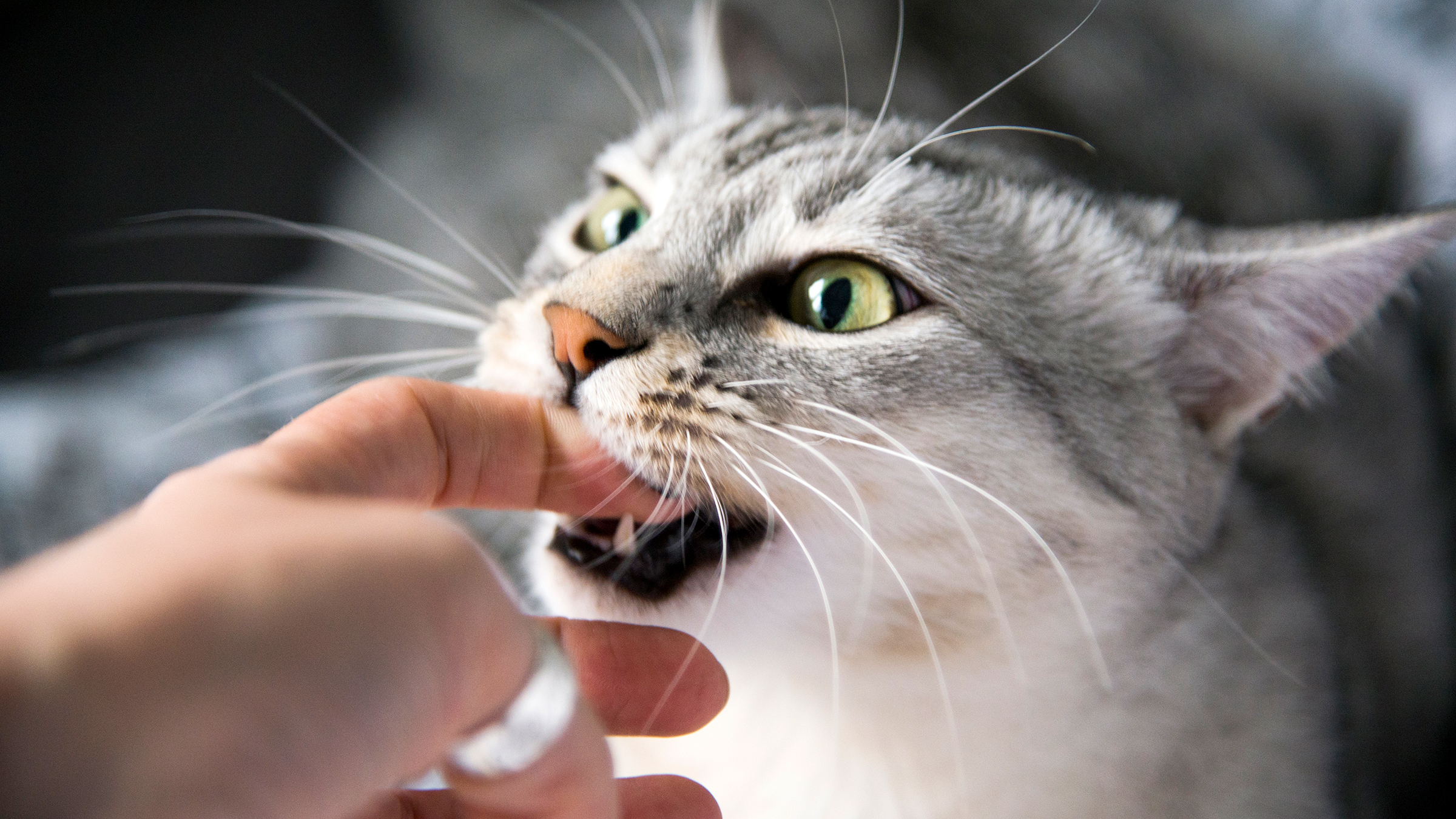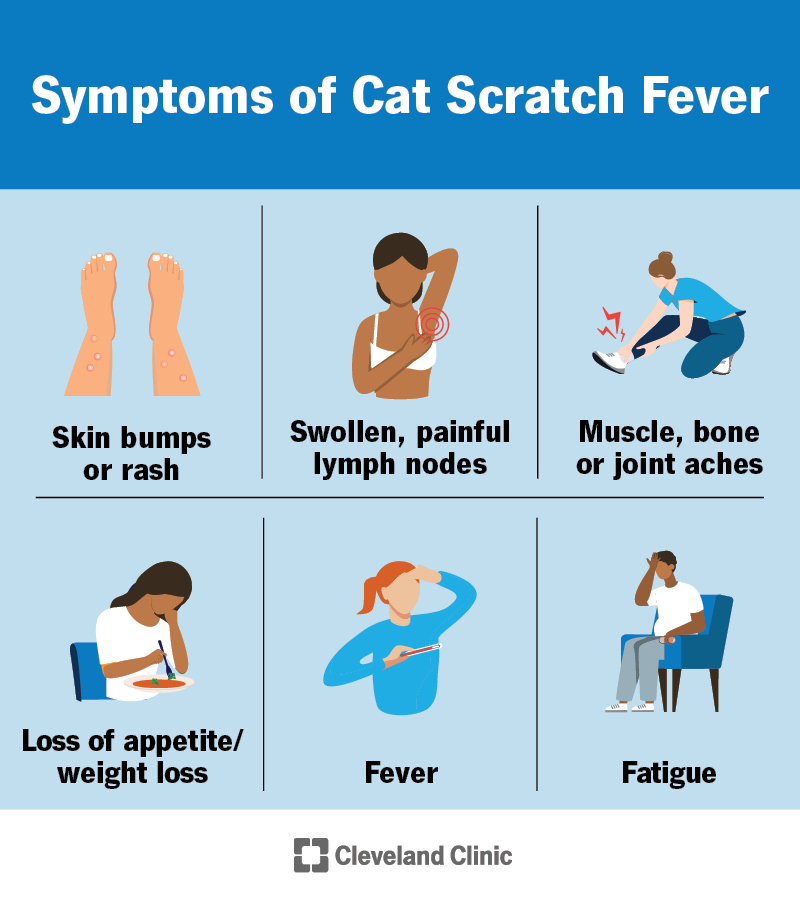Ever wondered why your adorable feline friend suddenly turns into a tiny ball of fury, leaving you with unexpected bites and scratches? You’re not alone.
Many cat owners like you face this puzzling behavior every day. It’s easy to feel confused or even frustrated, but understanding the reasons behind your cat’s actions can help strengthen the bond between you and your furry companion. Imagine the peace of mind you’ll have once you decipher these mysterious behaviors.
You’ll not only prevent those painful nips and swipes but also learn to communicate better with your cat. Keep reading to uncover the secrets behind why your cat might be acting out, and discover simple strategies to create a more harmonious home life with your whiskered friend.
Common Triggers For Cat Bites
Understanding why your cat bites or scratches can help you respond better and improve your bond. Cats don’t usually attack without reason; they have specific triggers that set off this behavior. Recognizing these common triggers allows you to adjust your interactions and keep both of you safe and happy.
Overstimulation During Petting
Have you noticed your cat suddenly biting after a few minutes of petting? This often happens because cats can get overstimulated quickly. What starts as a pleasant touch can become overwhelming, making them react defensively.
Signs like tail flicking, skin twitching, or ears flattening can warn you before the bite or scratch happens. Paying attention to these signals lets you stop petting just in time, avoiding unnecessary pain and stress.
Play Aggression In Cats
Cats, especially young ones, use their teeth and claws during play to mimic hunting behavior. Sometimes, this playful biting and scratching can be too rough or misdirected toward you.
You might be surprised how a simple hand moving like prey can trigger an instinctive pounce or bite. Redirecting their energy with toys instead of your fingers helps channel this natural aggression safely.
Fear And Anxiety Responses
Cats bite and scratch when they feel threatened or scared. Loud noises, sudden movements, or unfamiliar people can make your cat feel vulnerable and prompt a defensive attack.
Have you noticed your cat hiding or hissing before biting? These are clear signs of fear. Creating a calm environment and giving your cat space can prevent these stress-induced reactions.

Credit: pethelpful.com
Health Issues Behind Aggression
Cats sometimes bite or scratch due to hidden health issues. These problems can cause pain or discomfort. Your cat may show aggression as a way to protect itself. Understanding these health concerns helps you care better for your pet.
Pain-induced Biting And Scratching
Cats often bite or scratch when they feel pain. It may come from injuries or arthritis. Even small wounds can cause distress. When touched, the cat reacts by biting or scratching. This is a natural defense to avoid more pain.
Skin Irritations And Allergies
Itchy skin can make cats scratch a lot. Allergies to food, dust, or fleas cause irritation. This leads to redness, bumps, or hair loss. Cats may bite to relieve the itch. Watch for constant scratching or licking as signs.
Neurological Problems
Some health issues affect the brain or nerves. These problems can change how a cat behaves. They might bite or scratch without warning. Seizures or nerve pain can cause sudden aggression. Veterinary care is important for these symptoms.
Behavioral Causes To Consider
Understanding why your cat bites and scratches you can be puzzling, especially when they seem affectionate one moment and aggressive the next. Many times, these behaviors stem from underlying behavioral causes that your cat is trying to communicate through their actions. Recognizing these causes can help you address the issue more effectively and improve your relationship with your feline friend.
Territorial Behavior
Cats are naturally territorial animals. If your cat feels that their space is being invaded, they might bite or scratch to defend their territory. This behavior can show up when you introduce new pets, rearrange furniture, or even when strangers visit your home.
Think about how your cat reacts when you bring someone new into the house. Do they growl, hiss, or suddenly become more aggressive? These are signs they feel their territory is threatened. Giving your cat a quiet, safe space can reduce their need to protect their domain aggressively.
Redirected Aggression
Redirected aggression happens when your cat is upset by something they can’t reach or control, and they take out their frustration on you instead. For example, if your cat sees another animal outside and can’t get to it, they may bite or scratch you as a way to release that pent-up energy.
Imagine your cat staring intensely at a bird through the window, then suddenly turning on you with a scratch. Recognizing this pattern helps you avoid situations that trigger redirected aggression. Try distracting your cat with toys or playtime before they reach this point.
Lack Of Socialization
Cats that haven’t been properly socialized, especially during their early weeks, may not understand how to interact gently with humans. This can lead to biting and scratching as a form of communication or play. Often, these cats have trouble reading social cues and boundaries.
If your cat was a stray or adopted from a shelter, they might fall into this category. Patience and gradual exposure to positive human contact can teach them how to behave. Have you noticed if your cat bites more during play? That’s often a sign they’re still learning the rules of engagement.

Credit: www.reddit.com
Environmental Factors Affecting Your Cat
Environmental factors play a big role in why your cat may bite or scratch. Cats react to their surroundings in many ways. Changes or stress in the home can make them act out. Understanding these triggers helps you manage their behavior better.
Stress From Changes At Home
Cats dislike sudden changes. Moving to a new house, new furniture, or visitors can stress them. Stress often leads to biting or scratching. Your cat may feel unsafe or anxious. Giving them a calm space helps reduce stress.
Boredom And Lack Of Stimulation
Cats need mental and physical activity daily. Without enough play or toys, they get bored. Bored cats may use biting or scratching to get attention. Simple games or new toys keep them busy and happy. This lowers unwanted behaviors.
Presence Of Other Pets
New pets in the home can cause tension. Your cat may feel threatened or jealous. This can lead to aggressive behavior like biting or scratching. Introduce pets slowly and watch their interactions. Proper introductions help create peace between animals.
Preventing Bites And Scratches
Preventing bites and scratches from your cat is all about understanding their signals and responding in ways that respect their boundaries. It takes patience and attention to detail, but you can create a safer, happier environment for both of you. Let’s look at how you can spot the signs, play safely, and handle your cat to reduce those painful moments.
Recognizing Warning Signs
Your cat often gives subtle hints before biting or scratching. Watch for twitching tails, flattened ears, or sudden stiffening of their body. These behaviors usually mean your cat is feeling stressed or overstimulated.
Have you noticed your cat’s pupils dilating or their whiskers moving backward? These are also signs that they may soon react defensively. Learning to read these cues helps you step back before things escalate.
Safe Play Techniques
Using toys instead of your hands for play can prevent accidental bites and scratches. Wand toys, laser pointers, and stuffed mice allow your cat to express their hunting instincts safely.
Encourage short, frequent play sessions to avoid overwhelming your cat. Notice if your cat starts biting the toy aggressively or losing interest—that’s a good time to end play. This keeps playtime fun and stress-free for both of you.
Proper Handling And Interaction
Respect your cat’s personal space and avoid forcing attention when they want to be alone. Gently pet areas they enjoy like behind the ears or under the chin, and stop immediately if they show signs of discomfort.
When picking up your cat, support their body fully and hold them close to your chest. This makes them feel secure and reduces the chance of a defensive scratch or bite. How often do you check your cat’s body language before interacting? Taking a moment can make all the difference.

Credit: www.goodrx.com
When To Seek Veterinary Help
Knowing when to seek veterinary help for your cat’s biting and scratching is important. Not all aggressive behaviors are normal. Some could signal health or emotional problems that need attention. Acting early can protect both you and your cat.
Persistent Aggressive Behavior
Persistent biting or scratching that worsens over time needs a vet check. Aggression that does not improve with training may indicate deeper issues. Sudden changes in behavior also require professional advice. A vet can help find the cause and suggest solutions.
Signs Of Physical Illness
Look for signs like limping, swelling, or wounds after your cat bites or scratches. These may show pain or injury that triggers aggression. Loss of appetite, hiding, or changes in grooming are warning signs. Illness can make cats irritable or defensive. A vet exam can diagnose and treat these problems.
Behavioral Therapy Options
Behavior problems sometimes need special therapy. Vets can recommend behaviorists or trainers. Therapy may include:
- Desensitization to touch
- Positive reinforcement techniques
- Environmental enrichment to reduce stress
These approaches help reduce biting and scratching over time. Professional help improves your cat’s mood and your safety.
Frequently Asked Questions
Why Does My Cat Suddenly Bite And Scratch Me?
Cats bite and scratch to communicate discomfort or stress. Sudden changes in environment or handling can trigger this behavior. They may also be overstimulated or playing aggressively. Understanding their body language helps prevent bites and scratches.
How Can I Stop My Cat From Biting And Scratching?
Avoid rough play and use toys instead of hands. Provide mental and physical stimulation to reduce aggression. Reward calm behavior with treats and affection. Consistent gentle handling helps your cat feel safe and less likely to bite or scratch.
Is Biting And Scratching Normal Cat Behavior?
Yes, biting and scratching are natural cat behaviors. They use these actions for play, defense, and communication. However, frequent aggressive biting or scratching may indicate stress or health issues. Observing your cat’s habits helps identify when intervention is needed.
Can Health Issues Cause My Cat To Bite Or Scratch?
Yes, pain or illness can make cats irritable and aggressive. Dental problems, skin conditions, or injuries may cause biting or scratching. A vet checkup is recommended if behavior changes suddenly or worsens. Early diagnosis ensures proper treatment and relief.
Conclusion
Cats bite and scratch to communicate or play. They may feel scared or stressed sometimes. Understanding your cat’s behavior helps build trust. Watch their body language for signs of discomfort. Gentle play and patience can reduce biting and scratching. Respect their boundaries and give them space when needed.
A happy cat means a happy home for both. Keep learning about your pet to improve your bond. Small changes in your actions can make a big difference. Caring for your cat’s needs creates a peaceful relationship.

